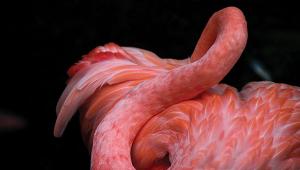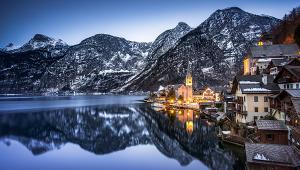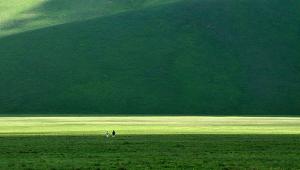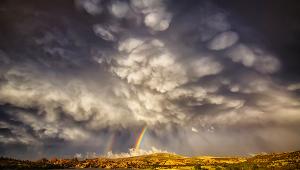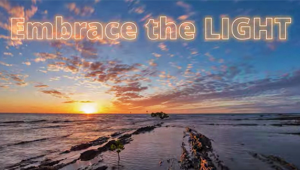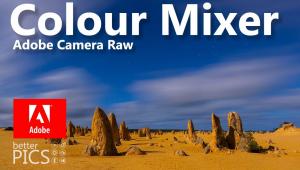Still & Motion
Editor’s Note: We are very pleased with the response to our online image submission, but I do have some suggestions that will aid us and help you in having images selected. Do not upload images with less than 2MB JPEG resolution. Limit submissions to two images per assignment. Be sure to provide technical information on the image. And please include copyright information that incorporates your name, not just your username.

The sense of motion while traveling through space is clearly communicated in this POV shot by Michael De Mouy. The image was made with a Canon EOS 7D and a Tokina 11-16mm lens and an exposure of f/22 and 4 seconds at ISO 400.
© Michael De Mouy

Motion here was created by a combination of optics and shutter speed. Holly Krieger worked with a Canon EOS 60D and a 24-70mm zoom. Exposure was f/2.8 at 1 second, with the motion abetted by zooming the lens during exposure.
© Holly Krieger

Mark Sharley makes the point that you needn’t go very slow in shutter speed…as long as the subject itself is fast enough and you have the instincts to catch it in a quick panning shot. Exposure with a Nikon D3S and a Nikkor 200-400mm lens was f/10 at 1/100 sec.
© Mark Sharley

Waterfalls and streams were a popular subject, and Gavin Hardcastle’s idyllic scene caught our eye. He photographed with a Canon EOS 5D Mark II and a Canon 16-35mm lens at f/8 and 13 seconds, using a Tiffen polarizing filter to help slow the shutter speed and harness tonality.
© Gavin Hardcastle

Carnival rides are a natural subject for this technique, and Theresa Litscher’s photo of this giant wheel catches the motion along with a pleasing, moody light. Exposure with a Canon EOS Rebel T4i was f/32 at 4 seconds.
© Theresa Litscher

Cary Quinn placed a stationary prism in a light box and used a small LED to create the “lightning” effect. Quinn photographed with a Canon EOS 10D and a 35-135mm lens and an exposure of 15 seconds at f/29 and -1.67 EV exposure compensation.
© Cary Quinn

Moving figures are a ghostly presence in this colorful scene made near the Piazza San Marco. Alan Bogart worked with a Nikon D7000 and a 24-70mm f/2.8 zoom lens and an exposure of f/7.1 at 3 seconds.
© Alan Bogart

Jeffrey Sarembock made this image at a DART train station in downtown Dallas with a Nikon D80 and an 18-70mm lens and an exposure of 1/3 sec at f/27.
© Jeffrey Sarembock

Richard Rubenstein made this image in the 10,000-square-foot model railway building located in the McCormick-Stillman Railroad Park in Scottsdale, Arizona. He photographed from 20 feet away with his Nikon D700 and Nikkor 28-300mm lens (at 300mm) and panned at 1/50 sec and f/6.3 with his camera set at ISO 2500.
© Richard Rubenstein

Michael Gulley created this evocative image of a folk dance group in Ensenada, Mexico. He photographed with a Canon EOS 20D and a 100mm lens with an exposure of f/2.8 at 1/50 sec, hand held. He then added to the texture by processing the image in Photoshop and Topaz Labs’ Boost.
© Michael Gulley

Dan Kaplan made this night shot of traffic around San Francisco’s Embarcadero. Exposure with a Canon EOS 5D Mark III and an EF 16-35mm f/2.8L II lens at ISO 400 was f/22 at 5 seconds with post-processing in Photoshop CS6.
© Dan Kaplan

Photographer Alice Cahill wrote: “This Burrowing Owl was standing quite still when he began to turn his head back and forth. I like how the eye is still clear even though the head itself is blurred.” To us it looks like a magical owl with one large eye. The image was made with a Canon EOS 7D and an EF 500mm f/4L IS USM lens with a 1.4x tele-extender. Exposure at ISO 500 was f/11 at 1/125 sec.
© Alice Cahill

Gerald Swede perfected the art of panning, giving a 3D feel to this crisp image of a bike racer against a blurred background. Exposure with a Nikon D300 and a Nikkor 16-85mm VR zoom lens at ISO 1600 was f/4.8 at 1/350 sec while panning.
© Gerald Swede
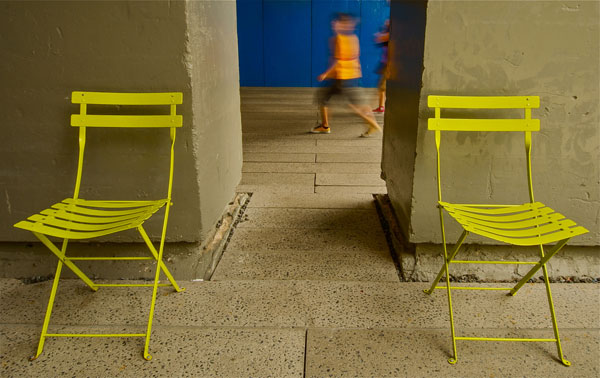
William Carson made this photo in the Meatpacking District of New York City. He arranged the yellow chairs and then waited for some pedestrians with colorful clothes to come by to create contrast with the blue wall. The photo was made with a Nikon D90 and a Nikkor 10-24mm lens and an exposure of f/16 at 1/6 sec.
© William Carson
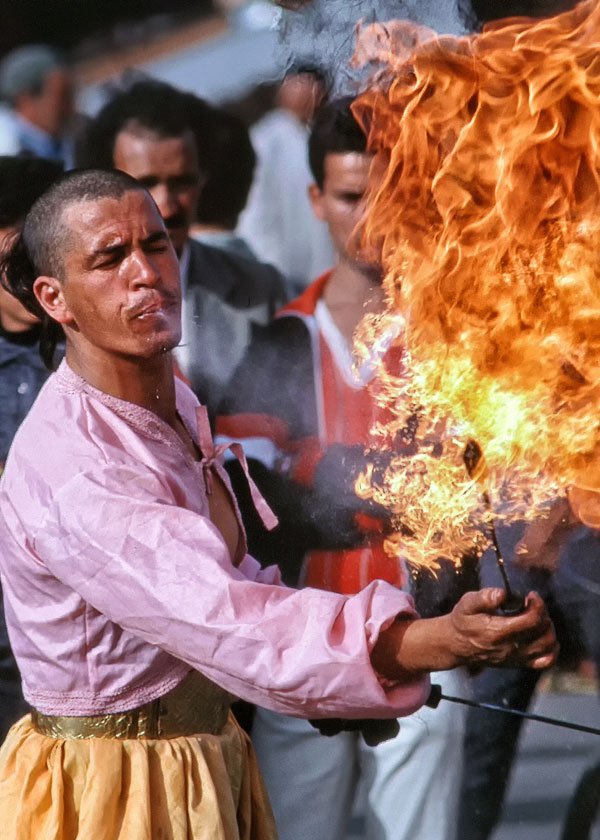
Dale Crawford made this image in the Marrakech Bazaar in 1974 with a Pentax Spotmatic on Kodachrome 25 film. The slide was scanned using SilverFast software, then processed with Photoshop and Nik software to enhance contrast and sharpen.
© Dale Crawford
Picture This! – Our Next Assignment
Super Deep Depth Of Field
Using a wide-angle lens at a narrow aperture, with the camera leaned in toward the close foreground, can produce startlingly deep depth of field, such as in this photo of a fence at a horse farm in Tennessee. So get out that wide angle and upload your special SDDOF shots for all to see. Photo was made with a Sony alpha 7 camera and a 28-70mm lens and an exposure of f/18 at 1/60 sec.
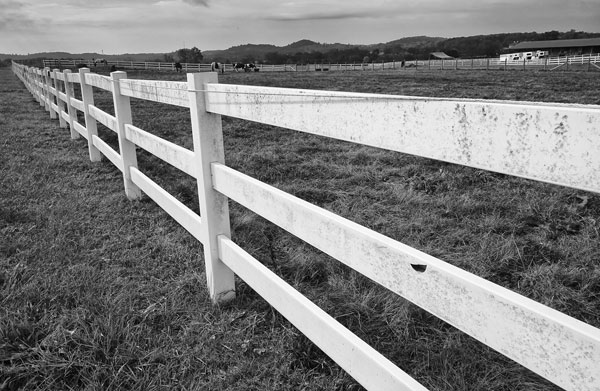
© George Schaub
How To Submit Online
1. Go to www.shutterbug.com and register. Scroll down the page and on the right side you will see a box for entering your username and your password. If you have already registered and/or submitted images for the Galleries you can skip this step. Respond to the activation e-mail. Registration is free. You will use your username and password whenever you visit or, with some systems, it will automatically load for you when you visit www.shutterbug.com.
2. Check the assignment and closing dates in the magazine. When the magazine is printed we will create an appropriate gallery for your images. The limit is two images per assignment.
3. Select and prepare your images. We only accept files at a maximum 5MB size, JPEG format. Save the JPEG at a quality level of 10 or higher. Note that file size in your image folder directory will determine upload size, not the “opened” file size, as JPEG compresses at 1:4 at higher quality ratings. If your images do not load it probably means you have exceeded the file size or have not used JPEG format.
4. Click on the Galleries tab on the homepage. In the Category section use the drop-down menu to select the Picture This! assignment. Note that images are simultaneously loaded into the assignment category as well as your own personal gallery. When the Picture This! assignment deadline date has lapsed the assignment gallery will be removed, but your images will still reside in your own gallery.
5. In the Description box add title, camera, lens, exposure information, and your full name. Also add any other comments or anecdotes you think relevant. We reserve the right to edit comments as needed.
6. Click the Save button at the bottom of the page. This uploads the image.
7. You retain copyright on the image.
8. We will choose the images after close of the due date.
9. Please feel free to comment on images submitted by other readers.
Scorecard
Deadline For Submission: May 15, 2014
Images will appear in our August 2014 issue
Our Next Topic: Rich And Color-Full
Deadline For Submission: June 15, 2014
Publication Date: September 2014 issue
Please Note: By submitting you agree to give us the right to show the image(s) on the web and for publication. You give us publication rights in the magazine and on the website(s) of Source Interlink Media.
Please Note: If you submit images with an enhancement through software beyond contrast, exposure, and simple saturation adjustments please indicate the software and “filter” used to attain that effect.—Editor
Want to see images selected for past picture this! Assignments? Go to www.shutterbug.com and click on picture this! In the “more articles…” box on the homepage.
Please Note: If the photograph includes a minor or a recognizable individual or group you are guaranteeing that you have a signed model release form, and especially a parental or guardian release form for minors. You should keep a copy of that release in your files. Scan that release and keep it handy. If an image is chosen for publication, failure to provide a form when requested will eliminate the image from consideration. You can find release forms at http://asmp.org/tutorials/model-release-minor-child.html and other resources on the Internet. By uploading images you attest that the model release form is valid, that any depiction of a person is with their consent, that you have a model release form available on request, and that all images you submit have been made by you.
If you have any questions or problems e-mail us at editorial@shutterbug.com with Picture This! in the subject line.
